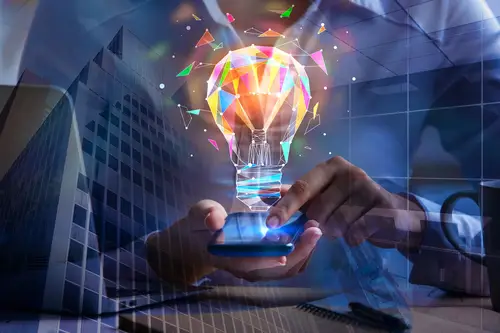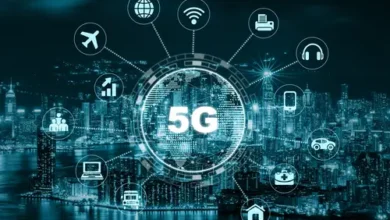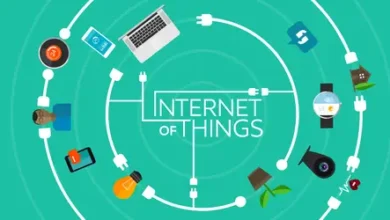Top Technology Trends: The Next Big Innovations in Tech

In the ever-evolving landscape of technology, staying ahead of the curve is crucial for businesses, consumers, and innovators alike. As we move further into the 21st century, several emerging trends are poised to revolutionize industries, reshape economies, and transform the way we live and work. From advancements in artificial intelligence and machine learning to breakthroughs in biotechnology and quantum computing, the next big innovations in technology promise to redefine the future in profound ways. In this article, we’ll explore some of the most promising technology trends to watch and their potential implications for society.
1. Artificial Intelligence (AI) and Machine Learning
Artificial intelligence (AI) and machine learning have already made significant strides in recent years. They are powering everything from virtual assistants and recommendation systems to autonomous vehicles and medical diagnostics. However, the potential applications of AI and machine learning are far from exhausted. We can expect to see even more groundbreaking innovations in the years ahead.
One area where AI is expected to make a significant impact is in healthcare. Machine learning algorithms can analyze vast amounts of medical data to identify patterns. Moreover they help predict disease outcomes, and personalize treatment plans for patients. AI-powered diagnostic tools could help clinicians detect diseases earlier and more accurately. Thereby leading to better patient outcomes and reduced healthcare costs.
In addition to healthcare, AI is also poised to transform industries such as finance, manufacturing, transportation, and agriculture. From optimizing supply chains and improving customer service to enhancing productivity and safety in industrial settings, AI-driven solutions have the potential to drive innovation and efficiency across a wide range of sectors.
2. Internet of Things (IoT) and Connected Devices
The Internet of Things (IoT) is another tech trend that is rapidly gaining momentum. It helps connecting billions of devices and sensors to the internet and enabling seamless communication and data exchange. From smart homes and wearable devices to industrial machinery and infrastructure, IoT technology is revolutionizing how we interact with the world around us.
In the consumer space, IoT devices are enabling greater convenience, comfort, and efficiency in our daily lives. Smart thermostats, lighting systems, and appliances allow homeowners to control their environment remotely and optimize energy usage. Whereas wearable fitness trackers and health monitors help individuals track their physical activity and monitor their health in real-time.
In the industrial sector, IoT technology is driving the rise of smart cities, intelligent transportation systems, and connected factories. By collecting and analyzing data from sensors embedded in infrastructure and machinery, organizations can gain valuable insights into performance, maintenance needs, and resource allocation, leading to greater efficiency, safety, and sustainability.
3. Biotechnology and Genomics
Biotechnology and genomics are unlocking new frontiers in medicine, agriculture, and environmental sustainability. Thereby offering the potential to address some of the most pressing challenges facing humanity. Advances in gene editing technologies like CRISPR-Cas9 makes it possible to modify the genetic code of organisms with unprecedented precision. This opens up new possibilities for treating genetic diseases, creating drought-resistant crops, and addressing climate change.
In healthcare, biotechnology and genomics are driving the development of personalized medicine. The provide tailored treatments as per individual’s unique genetic makeup. By analyzing a patient’s genetic profile, clinicians can identify genetic predispositions to disease, predict how individuals will respond to specific treatments, and design targeted therapies that maximize efficacy and minimize side effects.
In agriculture, biotechnology is revolutionizing crop breeding and genetic engineering. Thereby allowing scientists to develop crops that are more resilient to pests, diseases, and environmental stressors. By harnessing the power of genomics, researchers are working to increase crop yields, enhance nutritional value, and reduce the environmental impact of agriculture, helping to ensure food security for a growing global population.
4. Quantum Computing
Quantum computing represents a paradigm shift in computing technology. Thereby offering the potential to solve complex problems that are beyond the capabilities of classical computers. Unlike classical computers, which use bits to represent information as either 0s or 1s, quantum computers use quantum bits, or qubits. These can exist in multiple states simultaneously thanks to the principles of quantum mechanics.
One of the most promising applications of quantum computing is in the field of cryptography. Here quantum algorithms can break existing encryption schemes and render traditional cryptographic methods obsolete. Conversely, quantum cryptography offers the potential for unbreakable encryption. Thereby allowing for secure communication and data transfer even in the face of powerful adversaries.
In addition to cryptography, quantum computing holds the promise of revolutionizing fields such as drug discovery, materials science, optimization, and machine learning. Quantum algorithms could dramatically accelerate the process of simulating molecular interactions, designing new materials with specific properties, and solving complex optimization problems that are intractable for classical computers.
5. Augmented Reality (AR) and Virtual Reality (VR)
Augmented reality (AR) and virtual reality (VR) are blurring the lines between the physical and digital worlds, offering immersive experiences that engage our senses and reshape how we interact with information, entertainment, and the world around us. While AR overlays digital content onto the real world, VR creates entirely virtual environments that users can explore and interact with.
In the realm of entertainment and gaming, AR and VR are transforming how we consume media and experience storytelling. From immersive virtual worlds and interactive gaming experiences to augmented reality apps that bring static objects to life, AR and VR technologies are creating new opportunities for creativity and expression. Beyond entertainment, AR and VR have applications in fields such as education, healthcare, architecture, and remote collaboration. Virtual reality simulations can provide hands-on training for complex procedures and scenarios, while augmented reality overlays digital information onto real-world objects to enhance learning and decision-making. In healthcare, AR and VR technologies are being used for medical education, surgical planning, and patient rehabilitation, offering new ways to visualize and interact with medical data.
Conclusion
The next big innovations in technology promise to reshape our world in profound ways, offering solutions to some of the most pressing challenges facing humanity and unlocking new opportunities for progress and prosperity. From artificial intelligence and machine learning to biotechnology, quantum computing, and augmented reality, these emerging trends are driving transformation across industries and revolutionizing how we live, work, and interact with the world around us.
As these technologies continue to evolve and mature, it’s essential for businesses, policymakers, and individuals to stay informed and adapt to the changing landscape of innovation. By embracing these tech trends and harnessing their potential for positive impact, we can build a brighter future for generations to come. So keep an eye on these developments, and get ready to be a part of the next wave of technological revolution. The future is closer than you think.





